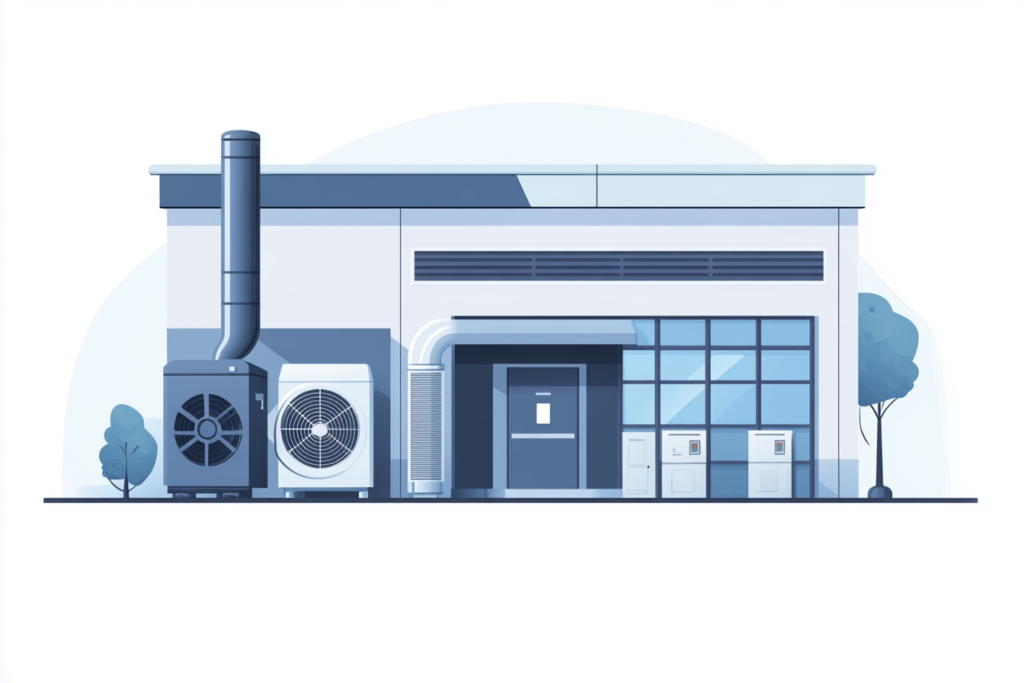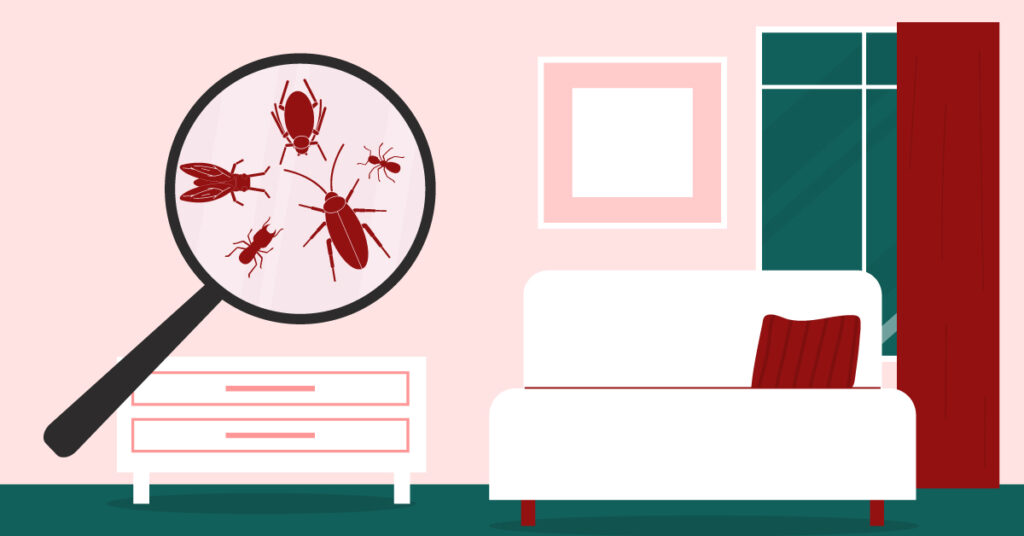When it comes to your home’s comfort and efficiency, your HVAC system plays a starring role. But an unsung hero is hiding behind your walls and ceilings that deserves more attention: your ductwork. Think of your ducts as the circulatory system of your home; they distribute conditioned air to every room, keeping you comfortable year-round. If not properly maintained, this integral network can compromise your comfort, air quality, and energy bills.
Keep reading as we explore everything you need to know about maintaining your ductwork for optimal performance and longevity.
1. Why Ductwork Maintenance Matters
Your ductwork is more than just several different metal tunnels running through your home. As one industry expert puts it, your home’s ductwork acts as “the circulatory system of your home,” which distributes heated or cooled air throughout your living spaces. When this system becomes compromised, so does the overall performance of your entire HVAC setup.
Regular ductwork maintenance offers numerous benefits:
- Improved energy efficiency: When dust and debris accumulate in your ducts, airflow becomes restricted, forcing your system to work even harder and consume more energy to keep up. Regular cleaning ensures smooth airflow, helping your HVAC system run efficiently and lowering energy bills.
- Better indoor air quality: Over time, dust, allergens, and other particles can accumulate in your ductwork. These contaminants can eventually circulate throughout your home, potentially affecting your health, especially for those with respiratory conditions.
- Extended system lifespan: Clogged ducts cause strain on your HVAC components, potentially leading to faster wear on key parts and costly repairs or even premature system replacement.
- More consistent home comfort: When your ductwork is functioning properly, you’ll enjoy more consistent temperatures throughout your home with fewer hot or cold spots.
2. Signs Your Ductwork Needs Attention
How do you know if your ductwork needs maintenance? Look for these telltale signs:
- Unusually high energy bills: If you’ve noticed a sudden increase in utility costs without a corresponding change in usage, leaky or clogged ducts might be the culprit.
- Uneven heating or cooling: Are some rooms in your home continually warmer or cooler than others? This could indicate airflow problems in your ductwork.
- Visible dust around vents: If you notice dust and dirt inside or being expelled from them, this can be indicative of unhealthy air and clogged ductwork in your system.
- Increased allergy symptoms: If you’re experiencing more frequent or severe allergy symptoms while at home, contaminants in your ductwork could contribute to the problem.
- Strange noises: Whistling, rattling, or banging sounds from your ductwork are not normal and could indicate loose connections, holes, or debris buildup.
3. The Ductwork Maintenance Essentials
Effective ductwork maintenance involves several key practices:
Regular Inspections
Experts recommend periodically surveying your major ductwork to identify any cracks or holes that might indicate leaks or higher-than-normal static pressure inside your system. While homeowners can do some visual inspection, a professional inspection every few years can identify issues that might not be visible to the untrained eye.
Sealing and Insulating
Properly sealing and insulating home ducts is essential to minimize air leakage. High-quality seals and insulation materials should be used to maintain airtight connections. This is particularly important for ducts that run through unconditioned spaces like attics, crawl spaces, or basements.
Professional duct sealing typically involves:
- Identifying and measuring leakage using specialized equipment
- Applying mastic sealant or metal-backed tape to joints and seams
- Insulating ducts in unconditioned spaces to prevent energy loss
Professional Cleaning
While there’s debate about how frequently ducts need cleaning, there are circumstances where professional cleaning is beneficial:
According to the Environmental Protection Agency (EPA), duct cleaning is non-negotiable in three specific situations: when there’s substantial visible mold growth in your ductwork, when your air ducts are infested with rodents or insects, or when ducts are clogged with excessive dust being released from supply registers.
Professional duct cleaning typically involves:
- Inspection of the entire system
- Loosening debris with specialized tools
- Vacuuming out contaminants with high-powered equipment
- Cleaning system components like registers and grilles
Filter Maintenance
One of the most effective ways to maintain your ductwork is by using the highest efficiency air filter recommended by your HVAC system’s manufacturer and changing it regularly. When filters become clogged, they restrict airflow and allow more particles to enter your ductwork.
4. DIY vs. Professional Maintenance
While homeowners can handle some aspects of ductwork maintenance, others require professional expertise.
What You Can Do:
- Change or clean air filters regularly
- Keep vents and registers clean and unobstructed
- Control moisture in your home, as this is the best way to prevent biological growth in air ducts
- Visual inspection of accessible ductwork for obvious damage
- Ensure furniture doesn’t block return or supply vents
When to Call a Professional:
- For comprehensive duct inspection and testing
- Sealing and insulating ductwork properly
- Professional duct cleaning, which requires specialized equipment to dislodge debris and vacuum it out through a large hose connected to your HVAC system
- Addressing mold or pest infestations
- Repairing damaged ductwork
- Modifying or redesigning poorly functioning duct systems
5. The Truth About Duct Cleaning
Duct cleaning is perhaps the most misunderstood aspect of ductwork maintenance. While some companies aggressively market this service, it’s important to understand that it’s not always necessary.
Contrary to some marketing claims, duct cleaning is not considered a routine part of HVAC maintenance. The EPA advises that it’s only necessary in specific situations: visible mold growth, pest infestations, or excessive dust and debris.
If you do opt for duct cleaning, ensure you hire certified professionals. The National Air Duct Cleaners Association (NADCA) certifies technicians who follow industry standards for proper cleaning. Be wary of services offering very low prices, as proper duct cleaning requires time and specialized equipment.
6. The Role of Preventive Maintenance
The best way to keep your ductwork in good condition is through preventive maintenance:
- Regular HVAC maintenance: Perform routine maintenance for your HVAC equipment, typically twice a year—once for the furnace and once for the air conditioner or heat pump. During these visits, mention any ductwork concerns to your technician.
- Protecting ductwork during renovations: During any construction or renovation projects that produce dust in your home, make sure to seal off supply and return registers and don’t operate your HVAC system until after cleaning up the dust.
- Managing humidity: Controlling moisture is crucial for preventing mold growth in ductwork. Use dehumidifiers in humid climates and address any water leaks promptly.
7. The Link Between Ductwork and Energy Efficiency
Your ductwork’s condition has a significant impact on your home’s energy consumption:
According to Energy Star, leaky ductwork could cost you as much as 30 percent more on your energy bills. This is because conditioned air escapes before reaching where it’s supposed to go, making your system work harder and run longer.
Properly designed and maintained ductwork should:
- Be appropriately sized for your home and HVAC system
- Have minimal bends and turns to reduce resistance
- Be well-insulated in unconditioned spaces
- Have properly balanced airflow to all rooms
- Be free of leaks at all connections and seams
8. When to Consider Ductwork Replacement
Even with excellent maintenance, ductwork doesn’t last forever. Most duct systems have a lifespan of 15-25 years, depending on materials and environmental factors. Consider replacement if:
- Your ductwork is over 15 years old and showing signs of deterioration
- You’re replacing your HVAC system with a significantly different size or type
- Your current ductwork is improperly sized for your home
- You’re experiencing persistent issues despite repairs and maintenance
- Energy audits reveal significant duct leakage that can’t be effectively sealed
The Bottom Line
Your ductwork may be out of sight, but it shouldn’t be out of mind. Regular maintenance improves your home’s comfort and air quality and contributes to significant energy savings over time. While not all maintenance tasks require professional intervention, developing a relationship with a qualified HVAC contractor will ensure your ductwork receives the care it needs to function optimally for years to come.
Remember that your ductwork is an integral part of your home’s infrastructure—treating it with the same care as other major systems will pay dividends in comfort, efficiency, and system longevity. Whether you’re undertaking simple DIY maintenance or scheduling professional services, your attention to this critical system will create a healthier, more comfortable, and more energy-efficient home.
You might also be interested in: 12 Home Upgrades That Drastically Reduce Energy Bills




